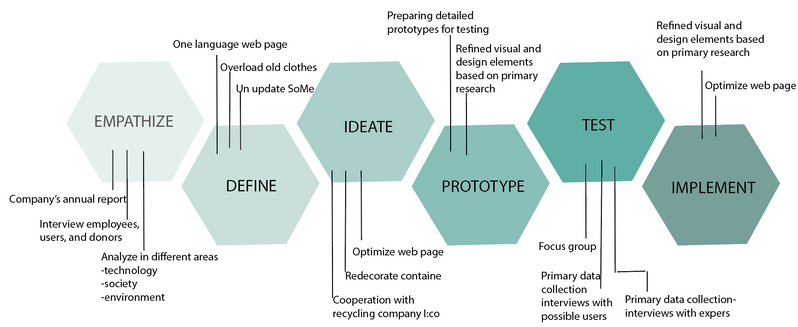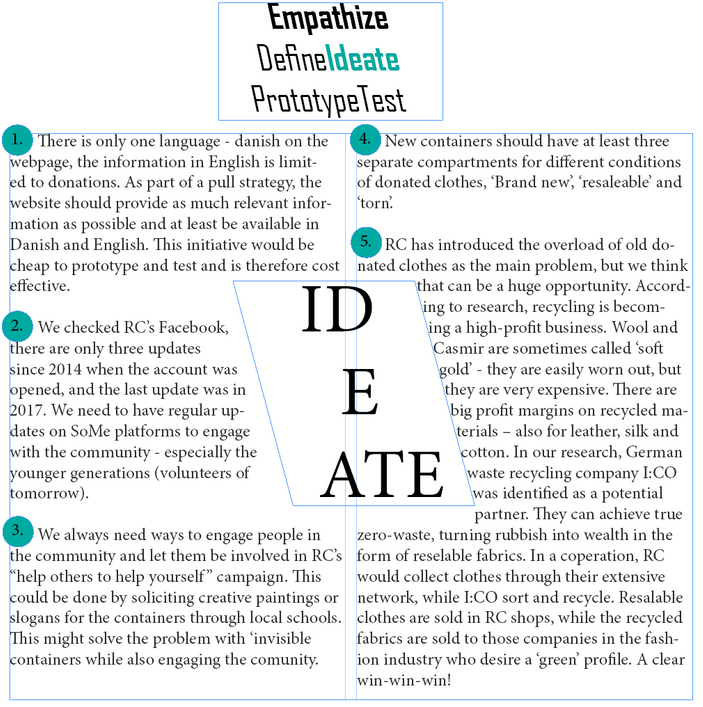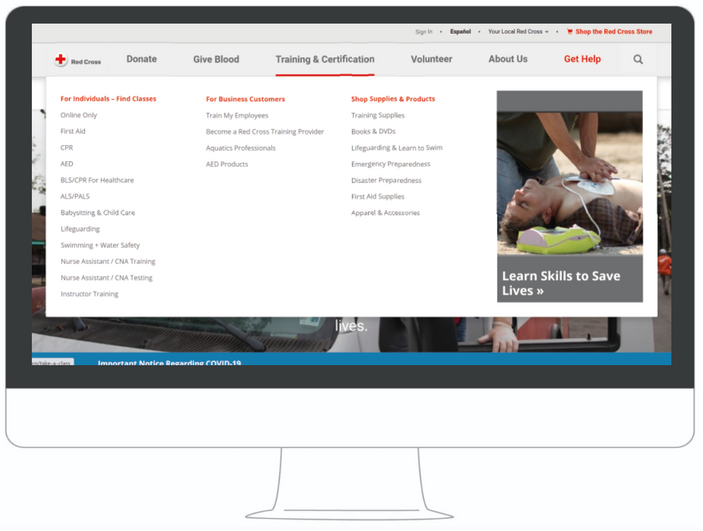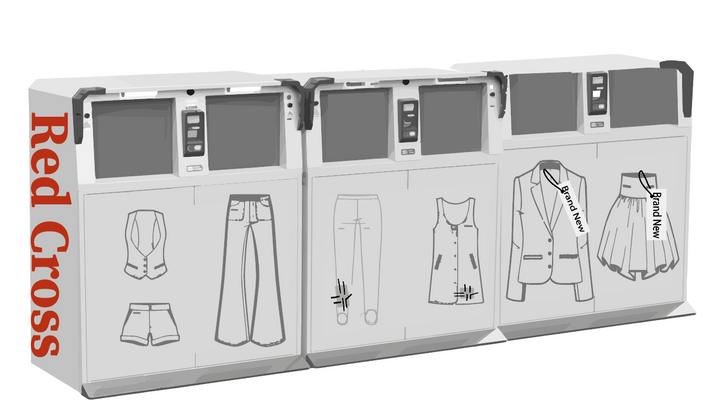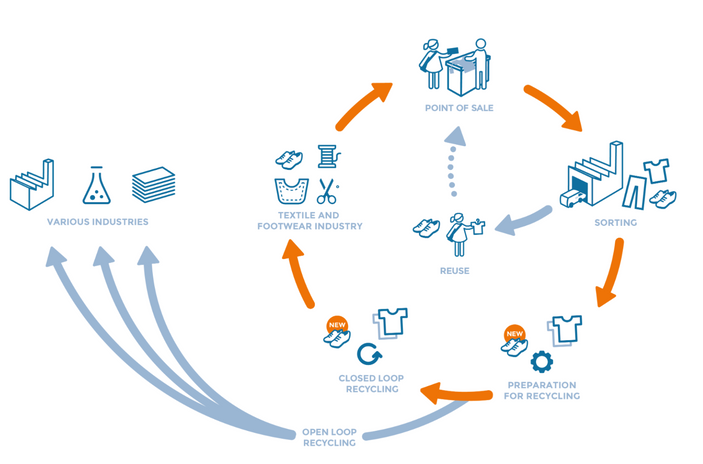We use the DESIGN THINGKING METHODOLYGY model to conduct a rigorous analysis of the collected information to ensure that the conclusions and solutions we give are true and feasible.
We have rechecked the inconsistent information many times, and also examined relevant information in different fields from a macro perspective. For example, how high-tech disposes and recycles old clothes, the society's view of old clothes, and how to do it is good for the environment, and so on.
Red Cross
The Red Cross mission is mainly to fully understand and analyze the object through the method of design and thinking. We cannot draw conclusions based on subjective thoughts before a large amount of facts and data are confirmed. From the initial investigation, defining the problem, to the model, and then to the test is an iterative process. Generally speaking, we should not rush to conclusions. After we have a conclusion, we must repeatedly test the model to further confirm that the so-called method is feasible. Here
I think the Red Cross in Copenhagen has done a good job, compared to other countries. However, there is still room for improvement in some areas. Here are the 5 solutions I gave.
In Denmark, a multicultural country, 13% of the population is neither Danish nor Danish. But most residents speak English, so an English website should be necessary. This is an English web page model I designed, which is easy to implement.
Separate the donated clothes in different containers to reduce the workload of volunteers and make it easier to re-sort.
I thoroughly analyzed I:co, a German recycling company, which can turn waste into treasure with zero waste. This is exactly what the Red Cross needs. The flood of old clothes is a burden to the Red Cross, but it is wealth to I:co.
